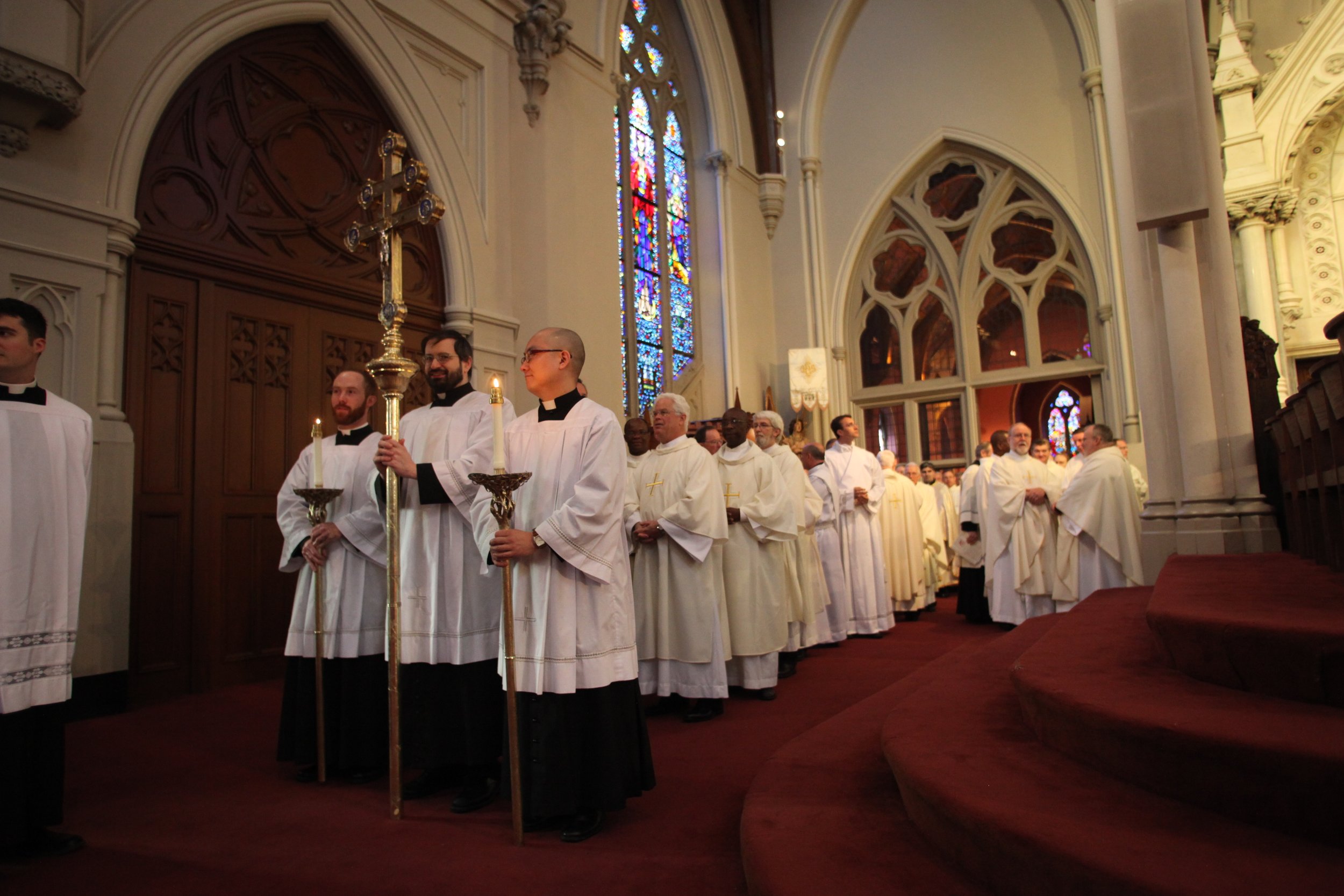The Southern Baptist Convention’s recent rule to prohibit women ministers is part of a long history of gender exclusion in Christian churches.
Men being ordained at the Cathedral of the Holy Cross, Boston. Roman Catholic Archdiocese of Boston. CC BY-ND 2.0
On June 14, 2023 the Southern Baptist Convention met in New Orleans for its annual conference and voted in favor of the church’s long-standing prohibition of women serving as pastors. The vote ruled overwhelmingly in favor of upholding the rule, a decision that led two congregations with women pastors to be expelled from the denomination: Saddleback Church in Southern California and Fern Creek Baptist Church in Louisville, Kentucky.
The vote reaffirms the Southern Baptists’ conservative focus and comes at the heels of a 2022 report detailing the church’s attempt to cover up sexual abuse by staff and pastors.
With 47,000 churches and 13.7 million members, the Southern Baptist Convention is the largest Protestant denomination in the United States. However, SBC’s decision to continue its exclusion of women from pastoral roles within the church is not unique within the Christian world. The Roman Catholic Church, along with the Church of Latter Day Saints (commonly called Mormons), and the Orthodox Church, all prohibit women’s ordination.
The question centered at the debate around female ordination is a complicated one. While many women make up a majority of congregants and are often heavily involved in Church life and activities, taking on secondary leadership roles, there remains a stark cut-off in women’s degree of power in these religious spaces, a phenomenon that has been dubbed the “stained-glass ceiling.”
In 2021, Duke University published research examining the reality of these “stained-glass ceilings.” Their findings highlighted a disproportionate lack of female leaders across a survey of Catholic, Evangelical, Black Protestant, Mainline Protestant, and Non-Orthodox Jewish communities. The study found that women lead only 14% of American congregations. The numbers varied across communities, with women leading 30% of white evangelical congregations and 16% of Black Protestant congregations. Contrastingly, within predominantly white Evangelical congregations only 3% were led by women, and only 2% of Roman Catholic Churches had female leadership.
However, even when women are able to serve as church clergy, they lag behind men when it comes to equal pay. Female clergy earn 76 cents to each dollar made by their male counterparts. The Church Law and Tax Compensation Handbook reported that male senior pastors earned a salary that was 40% higher– or $25,000 more– than female senior pastors between 2014 and 2015. While the pay gap appears to be shrinking, it is still present. From 2016 to 2017 men who worked as full-time senior pastors received 27% more earnings and benefits, or approximately $15,000 more, than their female counterparts.
Along with a measurable pay gap, women clergy members also face the same insidious sexism that harasses all women in leadership roles, leaving female clergy in a position of intense scrutiny through which through their authority, intelligence, and ability are routinely questioned and mocked.
Despite being barred from top roles, women play a crucial role in supporting the structures and community of the church. Out of all secondary ministerial staff, 35% of full-time and 46% of part-time staffers were female.
Women have long played a crucial role in religious life, serving as nuns, teachers, religious teachers, and deacons. But the very top positions are still out of reach.
A study found that only four out of nine major U.S. religious organizations that ordain women had a woman in the top leadership role. Those four churches– The American Baptist Churches, The Episcopal Church, The Evangelical Lutheran Church in America, and the United Methodist Church– each had only one woman in a top position.
In many ways women still serve as the backbone of the church, leading the charge behind community organizing, childcare, and volunteer services. When Pope Francis formally allowed women to serve in lay ministerial roles such as lectors and acolytes, he failed to acknowledge that women have been informally taking on the work and responsibilities of these positions for some time. Instead, he emphasized the difference between these positions and the ordained roles open only to men.
While women are the vital essence powering many churches, when it comes to access to the podium or microphone, they face categorical silencing.
Protest outside Westminster Cathedral. Catholic-womens-ordination.org.uk. CC BY-NC-ND 2.0
Why does female religious leadership matter?
Female leadership in the church not only allows religious spaces to better serve the specific spiritual needs of their congregation, but the opportunity to see examples of women in positions of power and respect also has a significant impact on young girls.
A 2018 study found that the presence of female congregational leaders can lead to better self esteem in the young girls who grow up in their church, an impact that reverberates into adulthood. Compared to women who had grown up with some female clergy members, women who had never had female congregational leaders were 10% less likely to agree and 30% less likely to strongly agree to having high self esteem.
Additionally, the study found a link between young girls' access to female congregational leaders and their future employment opportunities. Women who grew up with a female role model as their most influential leader were just as likely to be employed full time as men, in contrast to those who did not.
Female leadership in church marks an important benchmark of gender equality that extends beyond religious divisions into social and political life as well. Church leaders oftentimes serve as influential figures in their communities, with the opportunity to serve as a powerful voice in discussions on timely social issues, including abortion and LGBTQ+ rights. Elevating women’s pastorship would also elevate women’s roles as community leaders, local activists, and engaged political informers.
Stained glass from from the Basilique de Sacré Couer in Paray-le-Monial. Lawrence OP. CC BY-NC-ND 2.0
Get Involved
Harnessing the power and advocacy of their women congregants, there are many organizations working tirelessly to advocate for women’s ordination and religious empowerment.
Women’s Ordination Conference (WOC) is a grass-roots movement that has been working to increase female leadership opportunities within the Catholic Church since 1975. The activist group advocates for women’s ordination and increased power within the Catholic Church. In 2018, WOC members protested outside the Vatican in order to advocate for women’s right to vote in synods, a body that makes up the advisory board to the Pope. Along with advocacy work, the organization provides a network aimed at building a community of empowerment for young women in the Catholic Church. Working alongside their goals for gender equality, WOC also seeks to dismantle systems of oppression through anti-colonialism and anti-racist work that champions inclusivity.
For over 100 years, the International Association of Women Ministers has been supporting women’s ministry and advocating for women’s ordination, with members across 22 countries. IAWM offers annual assemblies that have been hosted both within the United States and abroad in Canada, England, Cuba, New Zealand, Germany, Scotland, and Hungary, with the mission of cultivating an international forum for female ministers from all backgrounds, countries, and cultures to develop relationships and provide a community of support for women’s professional growth within ministry.
Jessica Blatt
Jessica Blatt graduated from Barnard College with a degree in English. Along with journalism, she is passionate about creative writing and storytelling that inspires readers to engage with the world around them. She hopes to share her love for travel and learning about new cultures through her work.




